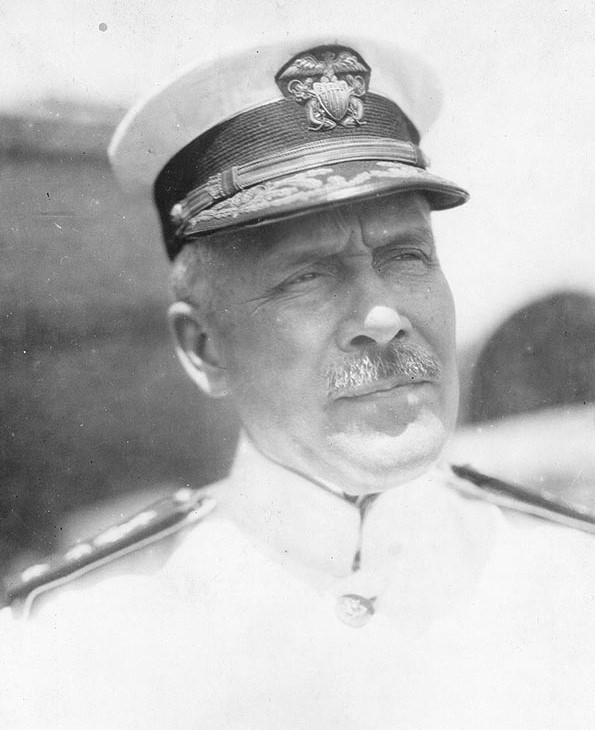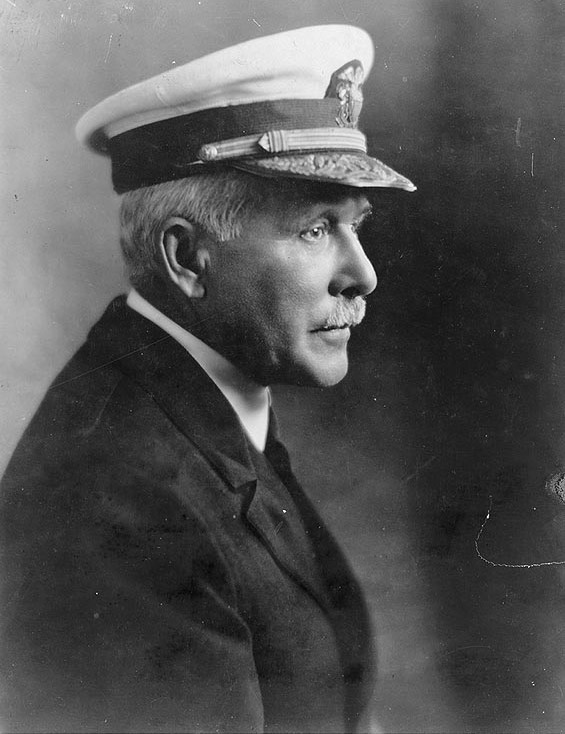William Veazie Pratt-born on 28 February 1869 at Belfast, Maine -was appointed to the Naval Academy from Maine's third congressional district on 9 September 1885. He graduated in 1889 and served two years at sea in the protected cruiser Atlanta as a passed midshipman before receiving his ensign's commission on 1 July 1891.
Following his commissioning, Pratt served successively in Chicago, Philadelphia, Petrel, Lancaster, and Annapolis. In 1898, during the Spanish-American War, he did tours of duty on board Mayflower, the prize Newfoundland, and Newark (Cruiser No. 19). During his tour of duty in Mayflower, Pratt saw service in the blockades of Havana, Santiago de Cuba, and at Puerto Rico.
Following the war, he served in Bennington, the monitor Monadnock, Indiana (Battleship No. 1), and Kearsarge (Battleship No. 5). Later, as he moved up the ranks, he served as navigator in Newark and then as executive officer in St. Louis (Cruiser No. 20) and California (Armored Cruiser No. 6). In January of 1911, he began a tour of duty as a student at the Naval War College at Newport, R. I., that lasted until June of 1913.
Following that, he served as aide to the Commander, Torpedo Flotilla, Atlantic Fleet, during which service he was in both Dixie and Birmingham (Light Cruiser No. 2). In 1914 and 1915, he also commanded Birmingham as additional duty. In November 1915, Pratt, by then a captain, concluded duty with the Torpedo Flotilla and began a year's assignment in the Panama Canal Zone. In September 1916, Capt. Pratt went to the Army War College for a course of instruction. During that assignment, he also performed temporary additional duty in the Office of the Chief of Naval Operations from February to May 1917.
After the United States entered World War I in April of 1917, Capt. Pratt was detached from the Army War College on 19 May and was reassigned permanently to the Office of the Chief of Naval Operations where his major assignment was liaison with the Army over troop movements overseas and coordinating convoy traffic across the ocean. By August 1918, Capt. Pratt had been appointed the first Assistant Chief of Naval Operations.
In January 1919, Capt. Pratt assumed command of New York (Battleship No. 34). He commanded the battleship for some 22 months, after which he took over duty as Commander, Destroyer Force, Pacific Fleet, on 1 November 1920. On 21 June 1921, Pratt was selected for rear admiral; and, the following month, he reported for duty with the General Board of the Navy. About three months later, he was formally "frocked" as Rear Admiral Pratt.
Through most of his 19 months of service with the General Board, Pratt busied himself with the thorny problems of naval disarmament and a critically reduced naval budget. Detached from duty with the General Board, Rear Admiral Pratt assumed command of Battleship Division 4 on 25 June 1923 at San Francisco on board Pennsylvania (BB-38). He served in that capacity until the summer of 1925 when he was called to Washington for temporary duty with the General Board. He concluded that assignment in late August and moved to Newport , R. I., where he became President of the Naval War College.
After two years at Newport, Pratt assumed duties as Commander, Battleship Divisions, United States Fleet, on 24 September 1927. He held that position for less than a year. On 26 June 1928, Admiral Pratt broke his four-starred flag on board California (BB-44) as Commander, Battle Fleet. On 21 May 1929, Admiral Pratt relieved Admiral Henry A. Wiley as Commander, United States Fleet. He held that office until September 1930. On 17 September, he assumed duty as Chief of Naval Operations. During his tenure in that office, Admiral Pratt also served as advisor to the American delegation to the London Naval Conference. Admiral Pratt served as Chief of Naval Operations until 30 June 1933 at which time he retired from active duty.
After eight years of retirement, Admiral Pratt was called back to active duty in January 1941 to help expedite the development of escort carriers for antisubmarine warfare. He went back into retirement once again on 15 July 1941. Admiral Pratt died at Chelsea, Mass., on 25 November 1957.

